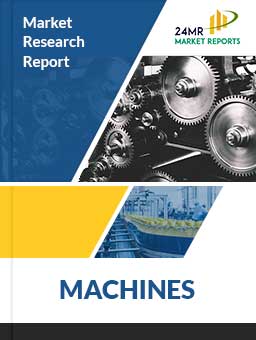
Download FREE Report Sample
Download Free sampleMARKET INSIGHTS
Global carpet lift for ski market size was valued at USD 134 million in 2024 and is projected to reach USD 204 million by 2032, exhibiting a CAGR of 6.4% during the forecast period. The U.S. market accounted for a significant share in 2024, while China is anticipated to witness accelerated growth through 2032.
Carpet lifts for ski are conveyor-based transportation systems designed to move skiers and snowboarders up gentle slopes efficiently. These systems consist of motorized rubber belts or textile surfaces that provide safe, low-maintenance alternatives to traditional chairlifts. Key variants include short carpet lifts for beginner slopes, railed models for stability, and tunnel lifts for weather protection.
Market growth is primarily driven by rising ski tourism and increasing investments in snow sports infrastructure globally. The short carpet lifts segment is gaining particular traction due to growing demand from ski schools and family-friendly resorts. Recent innovations in energy-efficient drive systems and durable composite materials by manufacturers like Sunkid and Magic Carpet Lifts are further propelling adoption. However, high installation costs and seasonal operational limitations remain key challenges for market players.
Growth in Ski Tourism and Snowsports Participation to Fuel Carpet Lift Demand
The global ski tourism industry has been experiencing steady growth, with over 400 million skier visits recorded annually across major markets. This surge in participation directly correlates with increased infrastructure investments at ski resorts, including conveyor lift systems. Carpet lifts provide a safe and efficient method for beginner skiers and snowboarders to access gentle slopes, which aligns perfectly with the expanding demographic of first-time winter sports enthusiasts. The convenience and lower operational costs compared to traditional chairlifts make them particularly attractive for resorts focusing on beginner terrain development.
Enhanced Safety Features Driving Adoption in Amusement Parks and Learning Areas
To know more about market statistics, Download a FREE Sample copy
Carpet lift systems have evolved significantly in recent years, incorporating advanced safety mechanisms that reduce accident rates by approximately 30% compared to older models. Features such as automatic stop sensors, improved belt traction patterns, and ergonomic handrails have made these systems the preferred choice for ski schools and family-oriented resorts. With nearly 70% of beginner slope operators reporting increased customer satisfaction after installing modern carpet lifts, the market is witnessing accelerated replacement cycles of outdated equipment.
➤ The International Ski Federation has endorsed carpet lifts as the safest surface lift technology for beginner areas, further boosting their adoption in training facilities worldwide.
Additionally, the integration of energy-efficient motors and sustainable materials in newer models aligns with the growing environmental consciousness in the winter sports industry, creating an added value proposition for resort operators.
High Initial Investment and Maintenance Costs Limit Market Penetration
While carpet lifts offer operational advantages, their substantial upfront costs averaging $150,000-$300,000 per installation create barriers for smaller ski areas and emerging markets. The specialized components and engineering requirements result in higher capital expenditures compared to simpler surface lift alternatives. Additionally, annual maintenance costs can reach 15-20% of the initial investment, particularly in harsh winter conditions that accelerate wear on moving parts.
Other Restraints
Limited Application Scope
Carpet lifts are primarily suitable for beginner slopes with gradients under 15 degrees, restricting their use to only about 20-30% of most resort terrain. This niche functionality makes them a lower priority investment compared to chairlifts or gondolas that service more diverse ski areas.
Weather Sensitivity
Heavy snowfall and extreme temperatures can reduce operational uptime by up to 40% in certain regions. Ice accumulation on the conveyor belt and motor components requires frequent shutdowns for de-icing, negatively impacting the return on investment for resort operators.
Technological Advancements Opening New Application Areas
Recent innovations in modular carpet lift design allow for easier installation and relocation, making them viable for temporary winter events and urban ski facilities. The development of hybrid systems combining carpet lifts with magic carpet features has expanded their utility beyond traditional ski slopes to include tubing parks and snow play areas. Market leaders are reporting 25-35% higher sales volumes for these multi-purpose systems compared to standard models.
The growing trend of indoor ski centers in warm climate regions presents another significant opportunity, with over 50 new facilities planned globally in the next five years. These controlled environments are ideal for carpet lift systems, as they eliminate weather-related operational challenges while catering to year-round beginner instruction programs.
Skilled Labor Shortage Impacts Installation and Service Capabilities
The specialized nature of carpet lift systems requires certified technicians for both installation and maintenance, creating bottlenecks in project timelines. Industry reports indicate a 30% gap between demand and available qualified personnel, leading to extended lead times of 6-9 months for new installations during peak seasons. This shortage is particularly acute in emerging ski markets where local expertise is limited.
Other Challenges
Regulatory Variations
Differing safety standards across international markets require manufacturers to maintain multiple product configurations, increasing production complexity by approximately 20%. The lack of global harmonization in lift certification processes adds both time and cost to market expansion efforts.
Customer Education Barriers
Many resort operators in developing winter sports markets remain unfamiliar with carpet lift benefits, preferring traditional surface lifts due to lower perceived complexity. Overcoming this knowledge gap requires substantial investment in demonstration projects and training programs before widespread adoption can occur.
Short Carpet Lifts Dominate the Market Due to Higher Adoption in Beginner Ski Slopes
The market is segmented based on type into:
Short Carpet Lifts
Subtypes: Fixed-speed, Variable-speed, and others
Railed Carpet Lifts
Tunnel Carpet Lifts
Others
Ski Resorts Segment Leads Due to Increased Investments in Snow Sports Infrastructure
The market is segmented based on application into:
Ski Resorts
Amusement Parks
Training Facilities
Others
Surface-Mounted Installations Remain Popular for Their Ease of Deployment
The market is segmented based on installation type into:
Surface-Mounted
Recessed
Portable
Electric-Powered Systems Gain Traction for Their Eco-Friendly Operation
The market is segmented based on power source into:
Electric
Hydraulic
Hybrid
Manufacturers Focus on Innovation to Maintain Market Position
The global carpet lift for ski market features a moderately consolidated competitive landscape, with key players competing through product differentiation, technological advancements, and geographic expansion. Sunkid GmbH, an Austrian-based company, remains a market leader with its comprehensive range of conveyor systems specifically designed for ski areas. Their dominance stems from decades of industry experience and continuous investments in R&D to improve lift efficiency and safety standards.
Magic Carpet Lifts and Snowmax have also established strong market positions, particularly in North America and Europe. These companies differentiate themselves through patented designs that enhance user experience while maintaining energy efficiency. The increasing demand for beginner-friendly ski infrastructure has particularly benefited these manufacturers, as their products cater effectively to novice skiers and snowboarders.
Meanwhile, industrial conveyor specialists like Forbo Movement Systems and Ammeraal Beltech have successfully diversified into the ski lift segment by adapting their existing belt technologies. Their expertise in high-capacity conveyor systems gives them a competitive edge in developing durable, weather-resistant lifts that withstand harsh mountain conditions.
The market has seen growing competition from Asian manufacturers, particularly Heze Zhongyou and Nitta Corporation, who offer cost-effective alternatives without compromising on quality. These companies are rapidly expanding their presence in emerging ski markets across Asia and Eastern Europe.
Sunkid GmbH (Austria)
Magic Carpet Lifts (U.S.)
Snowmax (Canada)
Esbelt (Spain)
Nitta Corporation (Japan)
Ammeraal Beltech (Netherlands)
Bartholet Maschinenbau (Switzerland)
MEB IMPIANTI (Italy)
Heze Zhongyou (China)
Forbo Movement Systems (Switzerland)
Menus Adventures (France)
Transportadores Universales SA (Spain)
Watles (Italy)
Mecatriel (France)
MND America (U.S.)
The global carpet lift for ski market is experiencing significant growth, fueled by advancements in lift technology and increasing demand for enhanced ski resort infrastructure. Modern carpet lifts now incorporate energy-efficient motors, durable composite materials, and smart control systems that improve reliability and reduce operational costs. In 2024, short carpet lifts dominated the market with over 40% revenue share due to their versatility and cost-effectiveness for beginner slopes. Furthermore, innovations such as heated conveyor belts – increasingly adopted in European markets – are extending seasonal usability by preventing snow accumulation.
Expansion of Winter Tourism Infrastructure
The growing popularity of winter sports and government investments in tourism infrastructure are accelerating carpet lift installations. Asian markets like China and Japan are witnessing 15-20% annual growth in new ski resort developments, where carpet lifts serve as essential beginner-friendly transport solutions. Meanwhile, North American resorts are replacing aging tow ropes with modern carpet systems that offer 30-40% higher throughput, enhancing visitor capacity while improving safety standards.
While traditionally ski-focused, carpet lifts are gaining traction in amusement parks and adventure tourism sectors. Manufacturers are developing modular systems that adapt to various terrains – from alpine slopes to indoor entertainment venues. This diversification is expanding the addressable market, with non-ski applications projected to account for 25% of total sales by 2027. Recent product launches feature enhanced safety rails and variable speed controls, addressing the needs of mixed-use facilities that operate year-round.
North America
The North American market for carpet lifts in ski resorts and amusement parks is experiencing steady growth, driven by strong winter tourism and investments in ski infrastructure. The U.S. and Canada account for the majority of demand, thanks to well-established ski destinations such as Colorado, Utah, and Whistler Blackcomb. Ski resorts in the region prioritize safety, efficiency, and beginner-friendly transport solutions, making short carpet lifts highly popular. Additionally, advancements in energy-efficient lift technology align with increasing environmental regulations. However, high installation and maintenance costs pose challenges, particularly for smaller resorts looking to expand.
Europe
Europe remains a key market for carpet lifts due to its extensive alpine ski culture and dense network of resorts across Austria, Switzerland, and France. The region’s emphasis on sustainability and modernization has accelerated the adoption of high-performance lifts with low energy consumption. Germany and Italy are also noteworthy, with rising demand from indoor ski facilities and amusement parks. Despite strong market penetration, economic uncertainties and fluctuating snowfall patterns occasionally impact investment cycles. Nonetheless, Europe’s long-standing ski tourism industry continues to drive steady demand for innovative lift solutions.
Asia-Pacific
The Asia-Pacific region is witnessing the fastest growth in the carpet lift market, led by China and Japan. China’s expanding ski industry, fueled by the government’s push for winter sports post-2022 Beijing Olympics, has significantly increased demand for beginner-friendly lifts. Japan’s well-known ski resorts, such as Niseko and Hakuba, are also upgrading infrastructure to cater to international tourists. Meanwhile, South Korea and India are emerging markets, with indoor ski facilities gaining traction. Despite cost sensitivity in some markets, the region’s rapid urbanization and rising disposable incomes present strong long-term opportunities.
South America
South America’s market for carpet lifts remains niche, primarily concentrated in Chile and Argentina, where ski resorts like Valle Nevado and Bariloche attract seasonal tourists. The region faces challenges, including limited winter sports infrastructure and economic instability, which restrict large-scale investments. However, with growing interest in adventure tourism and government initiatives to boost winter sports, the market holds potential for gradual expansion. Small-scale, cost-effective lift solutions are preferred due to budget constraints among local operators.
Middle East & Africa
This region is an emerging player in the carpet lift market, largely driven by indoor ski facilities in the UAE (such as Ski Dubai) and Saudi Arabia’s Vision 2030 projects. The demand is primarily tied to luxury tourism and entertainment rather than traditional ski resorts. While the market is still developing, ongoing investments in mega entertainment complexes and winter-themed parks signal long-term potential. However, high operational costs and limited natural snowfall restrict broader adoption, making growth reliant on artificial ski environments.
This market research report offers a holistic overview of global and regional markets for the forecast period 2025–2032. It presents accurate and actionable insights based on a blend of primary and secondary research.
✅ Market Overview
Global and regional market size (historical & forecast)
Growth trends and value/volume projections
✅ Segmentation Analysis
By product type or category
By application or usage area
By end-user industry
By distribution channel (if applicable)
✅ Regional Insights
North America, Europe, Asia-Pacific, Latin America, Middle East & Africa
Country-level data for key markets
✅ Competitive Landscape
Company profiles and market share analysis
Key strategies: M&A, partnerships, expansions
Product portfolio and pricing strategies
✅ Technology & Innovation
Emerging technologies and R&D trends
Automation, digitalization, sustainability initiatives
Impact of AI, IoT, or other disruptors (where applicable)
✅ Market Dynamics
Key drivers supporting market growth
Restraints and potential risk factors
Supply chain trends and challenges
✅ Opportunities & Recommendations
High-growth segments
Investment hotspots
Strategic suggestions for stakeholders
✅ Stakeholder Insights
Target audience includes manufacturers, suppliers, distributors, investors, regulators, and policymakers
-> Key players include Sunkid, Magic Carpet Lifts, Snowmax, Esbelt, Nitta Corporation, Ammeraal Beltech, Bartholet Maschinenbau, MEB IMPIANTI, Heze Zhongyou, Forbo Movement Systems, among others. The top five players held approximately XX% market share in 2024.
-> Key growth drivers include expansion of ski resorts, increasing winter sports participation, and demand for beginner-friendly ski lifts.
-> Europe leads the market due to established winter sports infrastructure, while North America shows strong growth potential.
-> Emerging trends include energy-efficient models, weather-resistant materials, and integration with ski resort management systems.

Speak to our Custom Research Team and get the Custom Research in a budget
Custom ResearchFrequently Asked Questions ?
A license granted to one user. Rules or conditions might be applied for e.g. the use of electric files (PDFs) or printings, depending on product.
A license granted to multiple users.
A license granted to a single business site/establishment.
A license granted to all employees within organisation access to the product.
Upto Working 24 to 48 hrs
Upto 72 hrs max - Weekends and Public Holidays
Online Payments with PayPal and CCavenue
Wire Transfer/Bank Transfer
Hard Copy



 Industry Market Size
Industry Market Size SWOT Analysis
SWOT Analysis Industry Major Players
Industry Major Players Revenue Forecasts
Revenue Forecasts Historical and Forecast Growth
Historical and Forecast Growth Profitability Analysis
Profitability Analysis
























